CAWR high-performance analytical hub
A unique high-performance analytical hub has been developed at CAWR enabling the Centre to widen research areas and take a quantum leap in many scientific studies. The CAWR high-performance analytical hub includes five laboratories (Pollution Dynamics Lab, Environmental Monitoring and Field Simulation Lab, Microbiology Lab, Soil Lab, Sample Preparation Lab) which support environmental sample preparation, analysis of both inorganic and organic compounds, microbiology and telemetry for field experiments. The CAWR analytical hub has been equipped with instrumentation capable of analysing virtually any matrix combined with advanced data analysis software.
Research equipment available
| Analysis | Location | Research Areas |
|---|---|---|
| Elemental Analysis | Pollution Dynamics Lab | Environmental science, Soil science, Environmental engineering, Analytical chemistry, Material science, Geochemistry |
Agilent 7900 (with UHMI)
The 7900 ICP-MS provides the high performance and sensitivity, and fast acquisition of transient signals – necessary for analysis of nanoparticles, single cells, and for laser ablation.
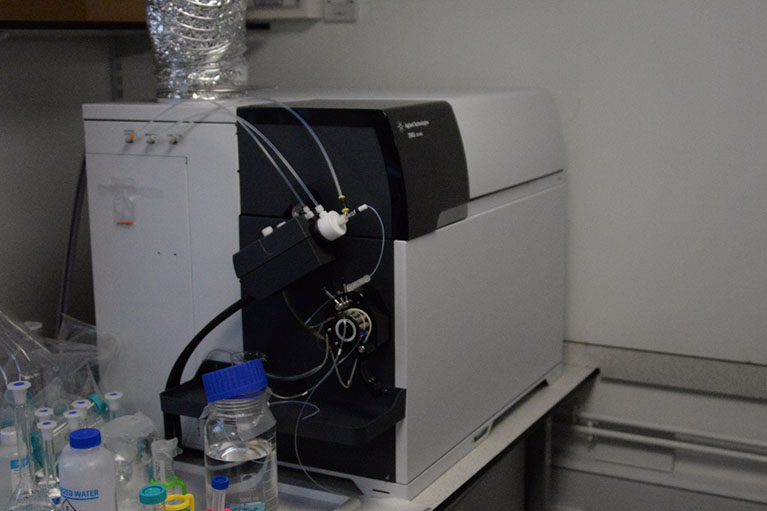
| Analysis | Location | Research Areas |
|---|---|---|
| Trace Element Analysis | Pollution Dynamics Lab | Environmental science, soil science, environmental engineering, analytical chemistry, material science, geochemistry |
Thermo Q-Exactive coupled with uHPLC (Thermo Vanquish)
This HRAMS instrument is a state-of-the-art equipped with the latest Orbitrap technology. Additionally, to the Orbitrap mass analyser, this instrument is equipped with a quadrupole mass filter for enhanced mass selectivity (precursor ion selection) and high energy collision cell.
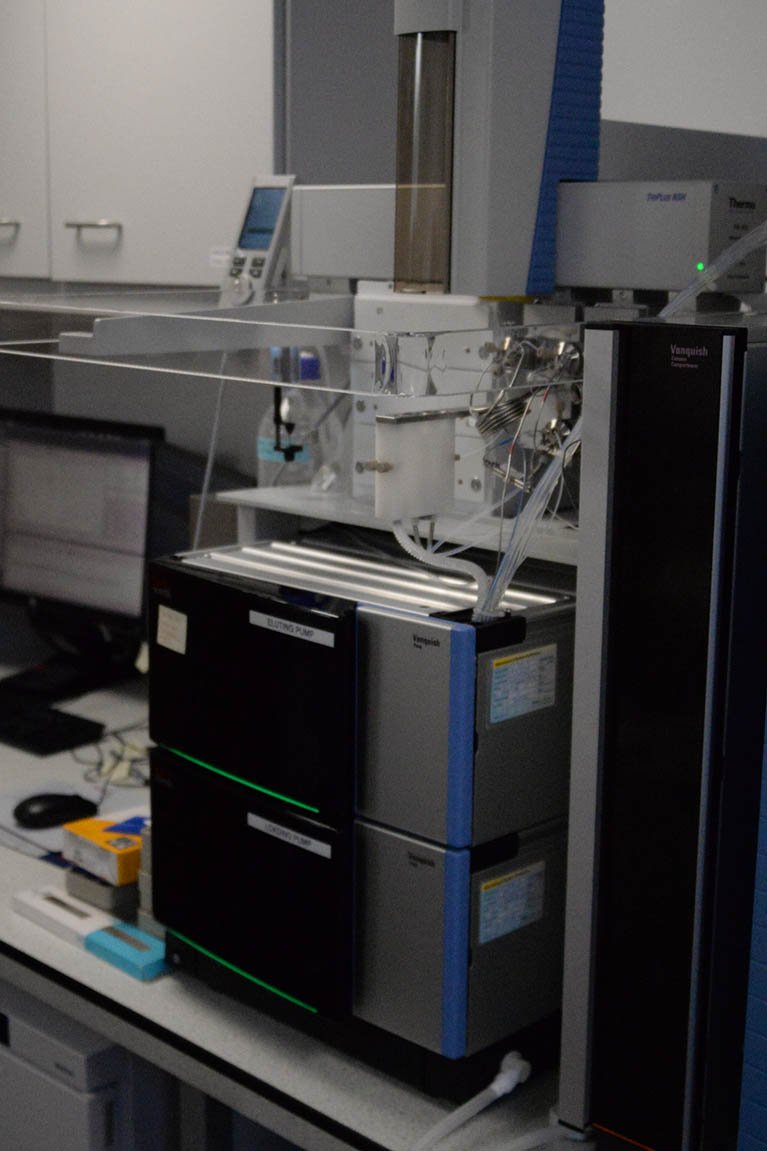
| Analysis | Location | Research Areas |
|---|---|---|
| Organic compounds and their degradation products | Pollution Dynamics Lab | Environmental science, soil science, environmental engineering, analytical chemistry, etc. |
Thermo Equan Max Plus
The EQuan MAX Plus is a fully automated dual sample preparation and injection system which enables analysis of trace levels of environmental contaminants. It utilises column switching to automate sample pre-concentration and analysis and can utilise sample volumes from as little as 1uL and as large as 20mL.
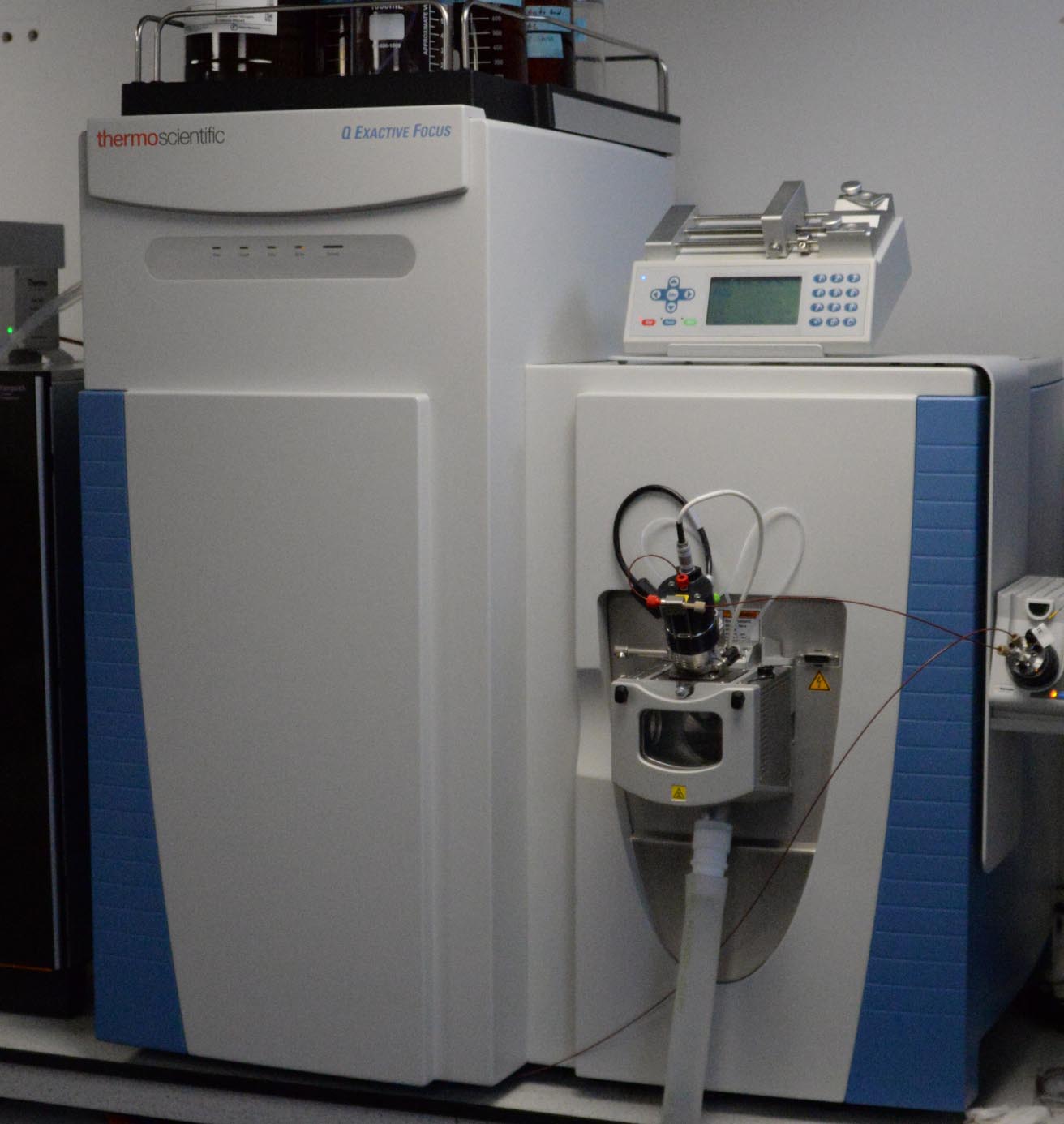
| Analysis | Location | Research Areas |
|---|---|---|
| Trace organic analysis: chromatographic front-end separation | Pollution Dynamics Lab | Environmental science, analytical chemistry |
Gilson ASPEC GX-271 (with large volume capability)
Water samples must be prepared prior to analysis, which consists of extracting and cleaning-up the chemicals of interest from the sample medium (e.g. water). Sample preparation is the most time consuming step and the greatest source of variation in chemical analyses. Solid phase extraction (SPE) is a powerful and rapid technique frequently used for sample extraction and clean-up. In order to obtain good quality results manual SPE methods depend on the experience of the operator and on how meticulously each step is performed.
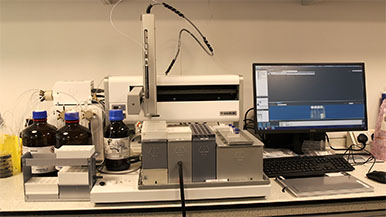
| Location | Research Areas |
|---|---|
| Pollution Dynamics Lab | Environmental science, analytical chemistry |
Thermo Dionex HPIC Integrion
This is a last generation high-pressure ion chromatography system that can operate up to 5000psi using the new high-efficiency 4µm particle-size columns for improved peak resolution. This instrument allows for an easier determination of both inorganic cations and anions in a sample by the change in conductivity. Additionally, it can be used as well for highly polar organic compounds (such as glyphosate). The HPIC Integrion can work as a standalone instrument or coupled to our HRAMS Q-Exactive Focus mass spectrometer. When hyphenated to an MS instrument it provides an additional dimension for environmental analysis, by overcoming the inherent problems of analysing compounds such as highly polar pesticides.
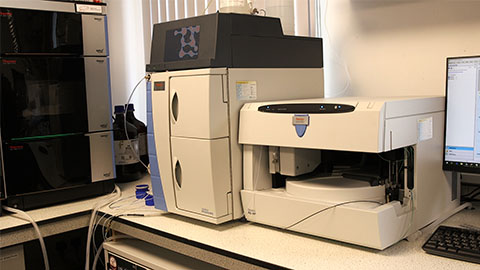
| Analysis | Location | Research Areas |
|---|---|---|
| Trace organic analysis for organic and inorganic anions | Pollution Dynamics Lab | Environmental science |
Thermo Dionex ASE-350
Automate extraction, filtration and clean-up of compounds from solid and semisolid samples in minutes using the automated Thermo Scientific™ Dionex™ ASE™ 350 Accelerated Solvent Extractor. This system accommodates sample sizes of 1-100g, allows unattended extraction of up to 24 samples and uses 50 to 90% less solvent compared to other methods. The chemically inert pathway supports acid and alkaline sample matrices and solvents. Flexible, easy-to-operate and cost-effective, the Dionex ASE 350 is ideally suited for high-throughput laboratories and for a wide variety of applications.
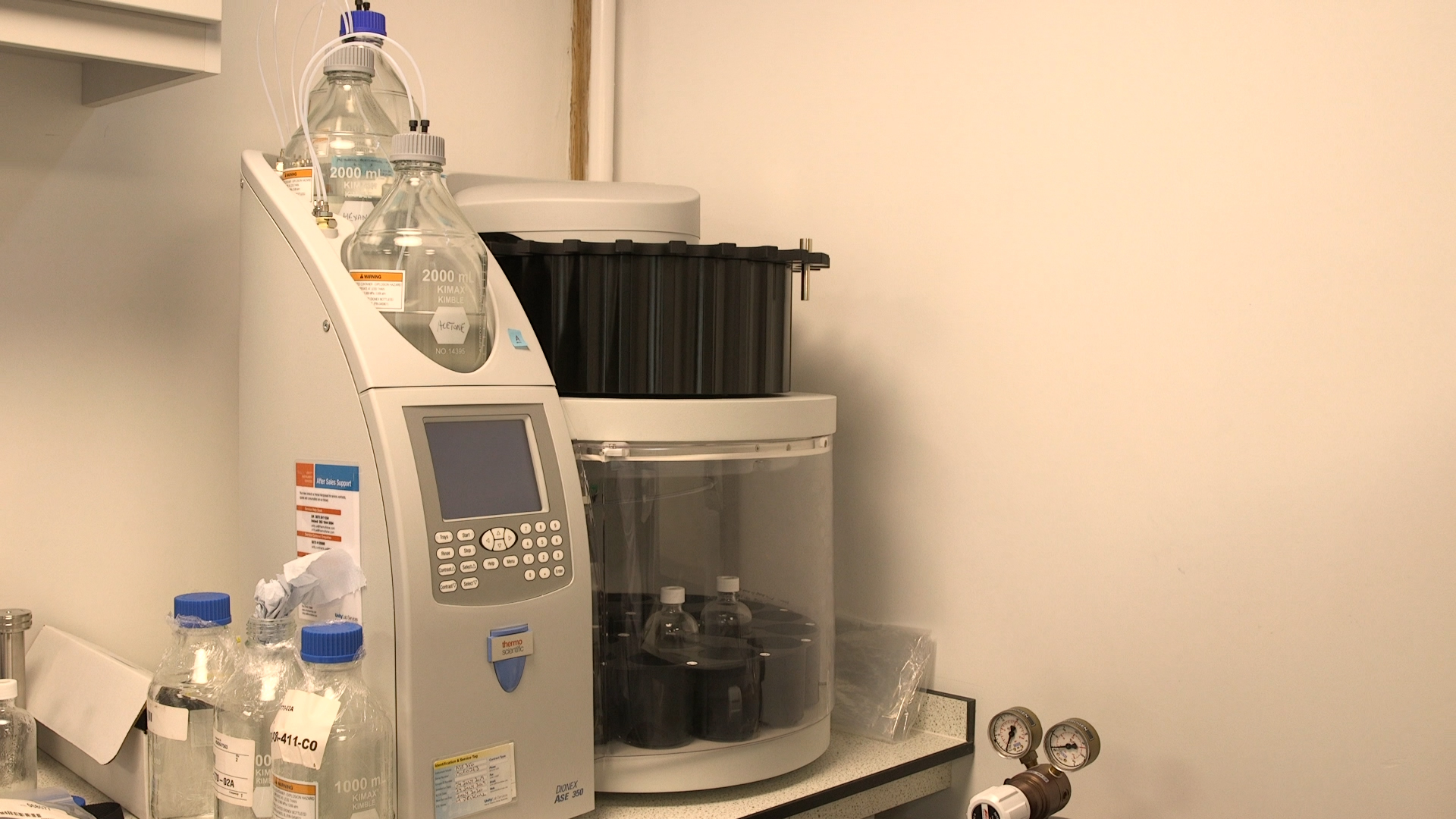
| Analysis | Location | Research Areas |
|---|---|---|
| Sample preparation, extraction procedures | Pollution Dynamics Lab | Environmental science |
Nicolet iN10MX FTIR Microscope
This instrument combine FTIR spectrometer and microscope with the ability to measure samples down to a few microns. FTIR is non-destructive and requires little or no sample preparation. It is fully automated system performance verification provides maximum confidence. This instrument has room temperature and liquid nitrogen detectors. Nicolet iN10MX FT-IR uses Thermo Scientific™ OMNIC™ Specta Software providing spectral identification of pure compounds and mixtures.
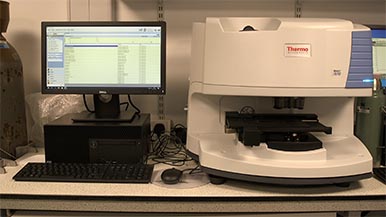
| Analysis | Location | Research Areas |
|---|---|---|
| Microspectroscopy, material identification, functional group identification, packaging and laminates, coatings, API mixtures distribution mapping; contaminant identification, failure analysis; micron-particle identification; size of particles and their morphology, particle distribution in the samples, etc. | Environmental Monitoring and Field Simulation Lab | Environmental science, soil science, environmental engineering, material science, geochemistry, etc. |
DXR3 Raman Microscope
Raman microscopy provides spatial resolution down to the sub-micron level. Raman imaging enables to map chemistries across areas of a sample to identify inclusions, contaminants, homogeneity or interfaces. Raman is generally non-destructive and requires little or no sample preparation. Raman is good for examining solid samples and aqueous solutions.
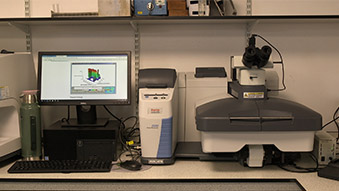
| Analysis | Location | Research Areas |
|---|---|---|
| Microspectroscopy, material identification, functional group identification, submicron-particle identification; size of particles and their morphology, particle distribution in the samples, etc. | Environmental Monitoring and Field Simulation Lab | Environmental science, soil science, environmental engineering, material science, geochemistry, etc. |
Milestone Ethos UP
A microwave digester is an automated system to prepare samples for chemical analysis. It can extract both inorganic organic chemicals from any sample prior to analysis. Sample preparation is a necessary and fundamental step before any sample can be chemically analysed and its importance cannot be underestimated. Among the plethora of techniques used for sample preparation, microwave (MW) digestion is an essential stage for inorganic (e.g. metals) determination(s) in any chemical laboratory, as it extracts metals from soil, sediment or tissue prior to subsequent analysis. New hardware developments have, however, also led to MW digestion to be used for solvent extraction of organic compounds (e.g. pesticides, dioxins, etc.) from environmental samples, making this technique much more versatile.
| Analysis | Location | Research Areas |
|---|---|---|
| Sample preparation, extraction procedures, sample digestion | Sample Preparation Lab | Environmental science, soil science, environmental engineering, material science, geochemistry, analytical chemistry, etc. |
Dumas Analyser
The Dumas principle is an analytical chemistry method to determine the carbon and nitrogen content in samples. The method is based on the combusting of a sample at 1000°C in the presence of oxygen, whereby the carbon and nitrogen are converted to CO2 and NOx respectively. Both gasses are separated by chromatography and measured in a thermal conductivity cell. To calculate the crude protein content of samples (multiplying N with 6.25) the Dumas method can be used as an alternative for the Kjeldahl method.
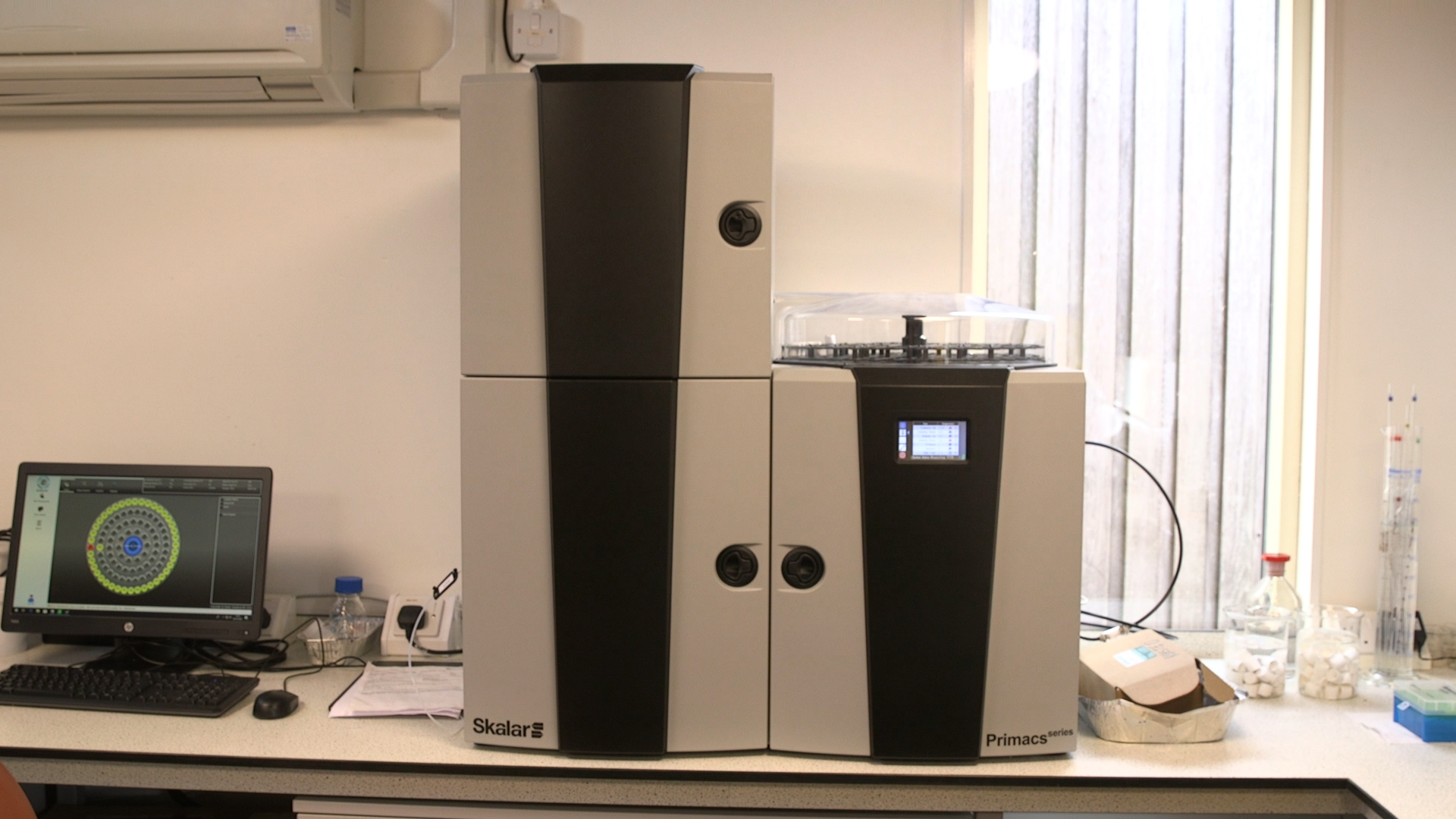
| Analysis | Location | Research Areas |
|---|---|---|
| Gas analyser (e.g. CO2 and NOx) | Environmental Monitoring and Field Simulation Lab | Environmental science, soil science, etc. |
| Analysis | Location |
|---|---|
| Sample preparation and storage | Soil lab |
Nikon high magnification microbiological fluorescence microscope
A fluorescence microscope uses fluorescence and phosphorescence instead of, or in addition to, reflection and absorption to study specimens. A sample is illuminated with light of a wavelength which excites fluorescence in the sample. Typical components of a fluorescence microscope are a light source, excitation filter, the dichroic mirror (or dichroic beamsplitter), and emission filter. Fluorescence microscopes can be used for many different applications including localization of specific proteins, determining the shape of organs, cells, and intracellular structures, studying protein interactions or conformation, examining ion concentration and observing live cells. Look for ease of use, ergonomic features, multiple modes, high resolution and the possibility to upgrade.
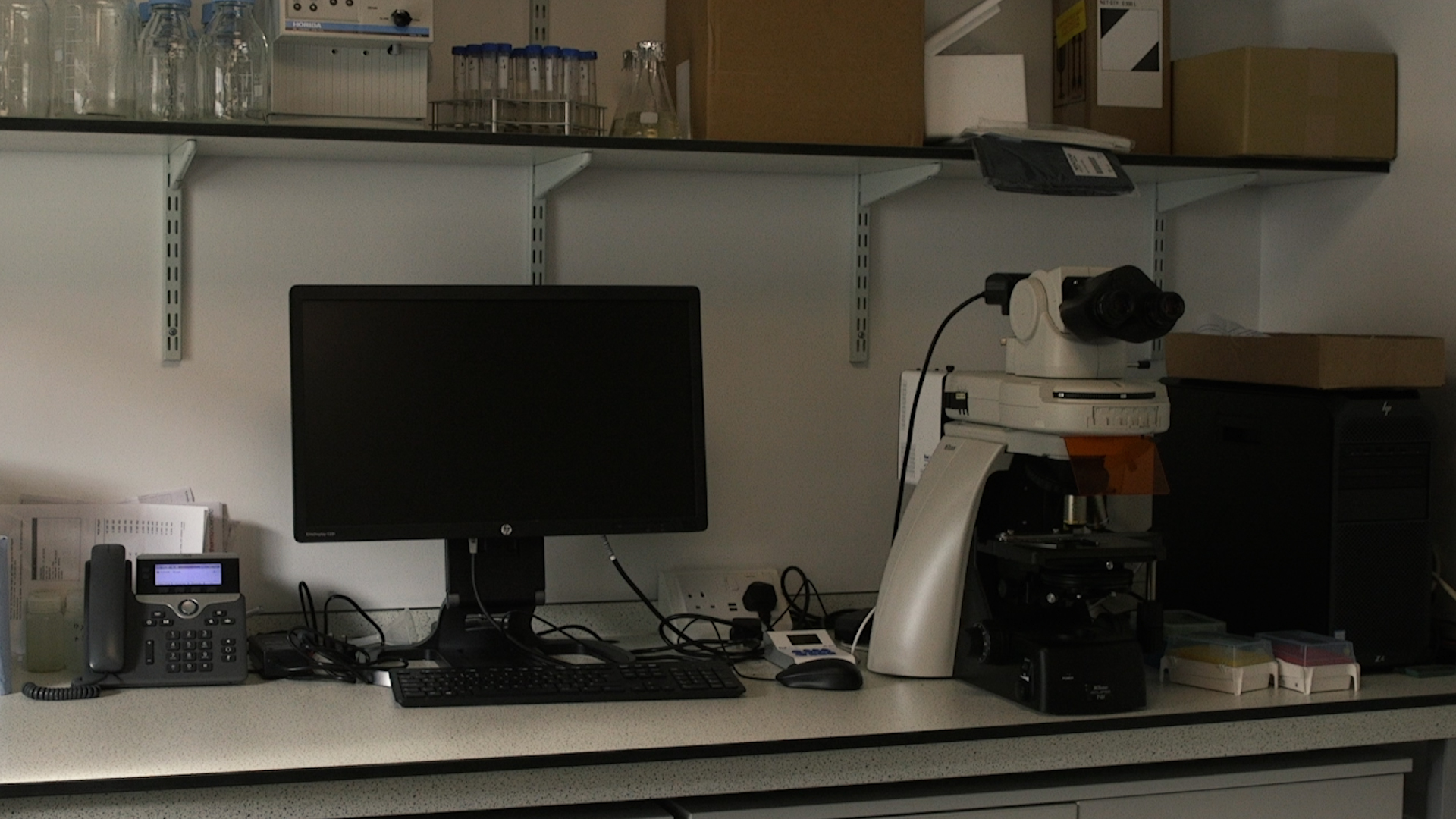
| Analysis | Location | Research Areas |
|---|---|---|
| Microbiological microscopy analysis | Microbiology Lab | Microbiology, environmental science, etc. |
Contact
Academic Lead - Dr Anna Bogush (Associate Professor, contact for potential research collaboration)
Laboratory Technician - Sam Towers (contact for technical aspects of CAWR analytical equipment)




